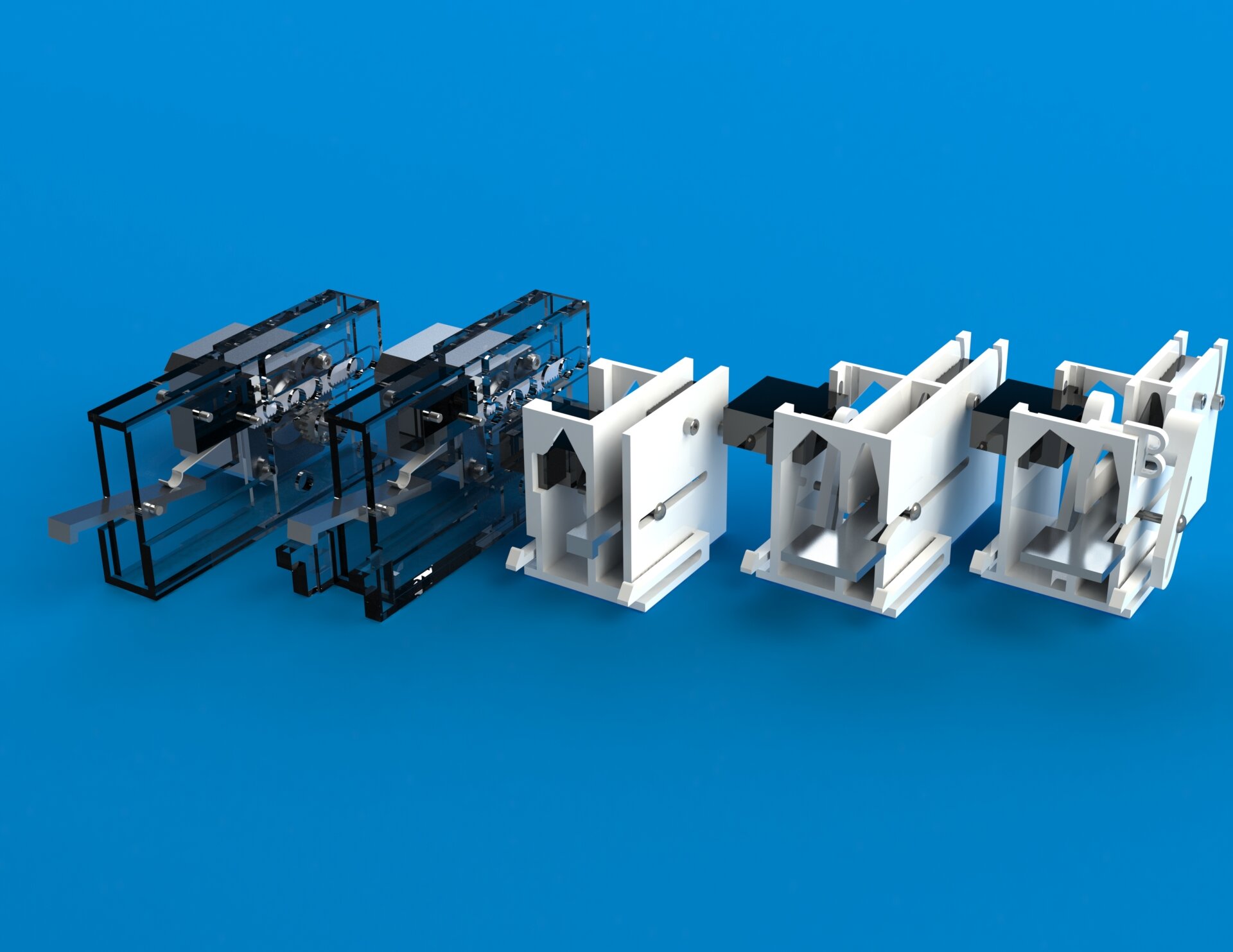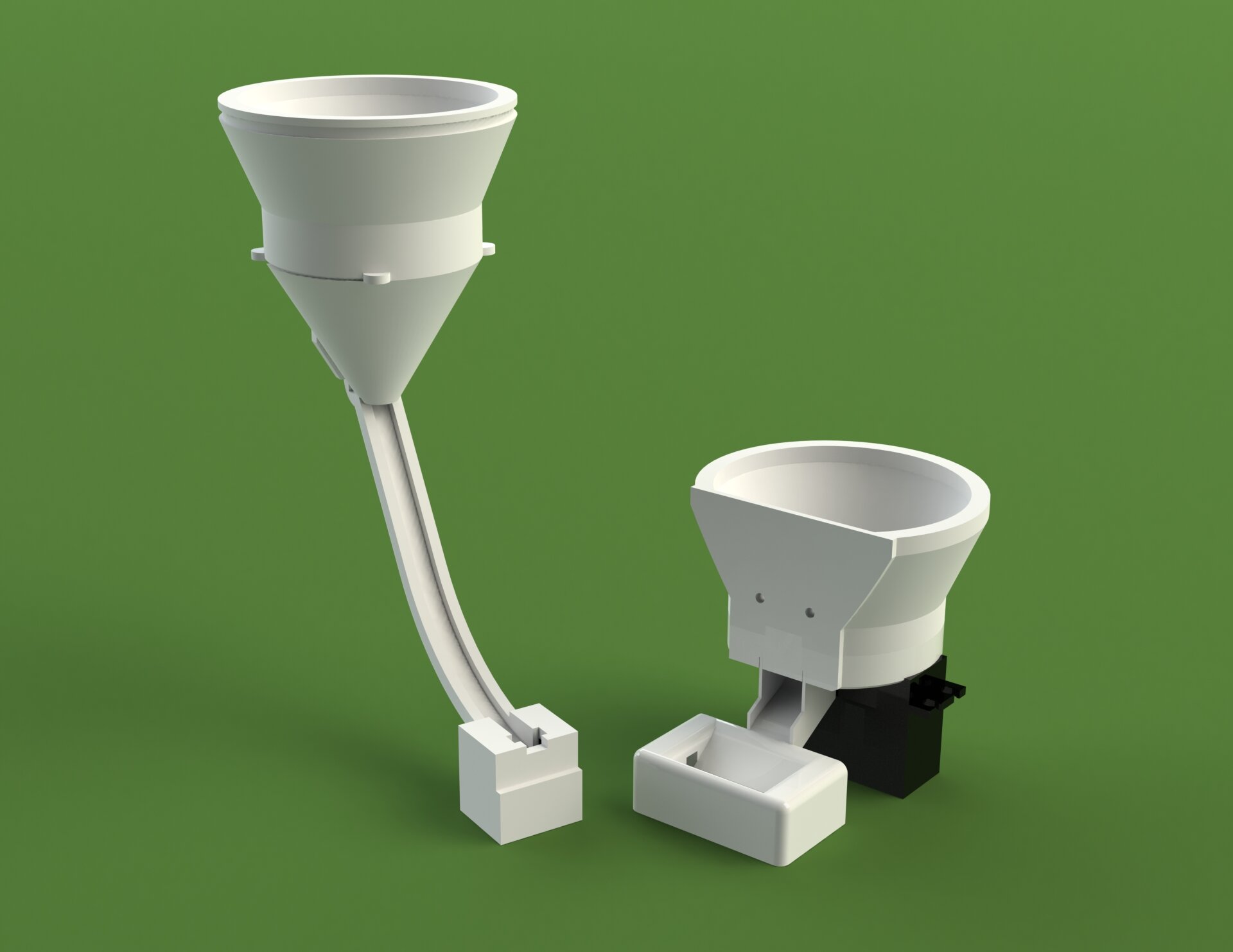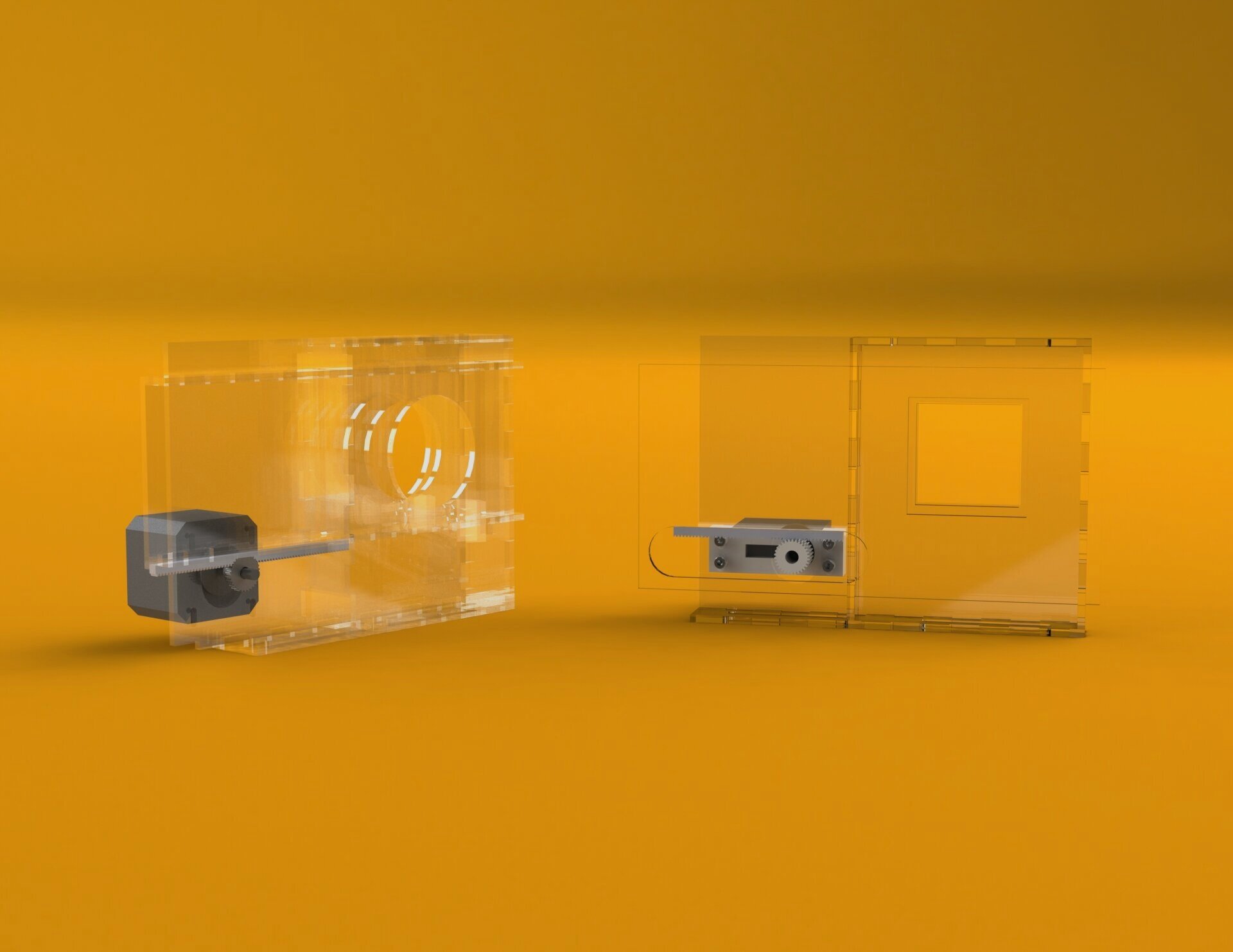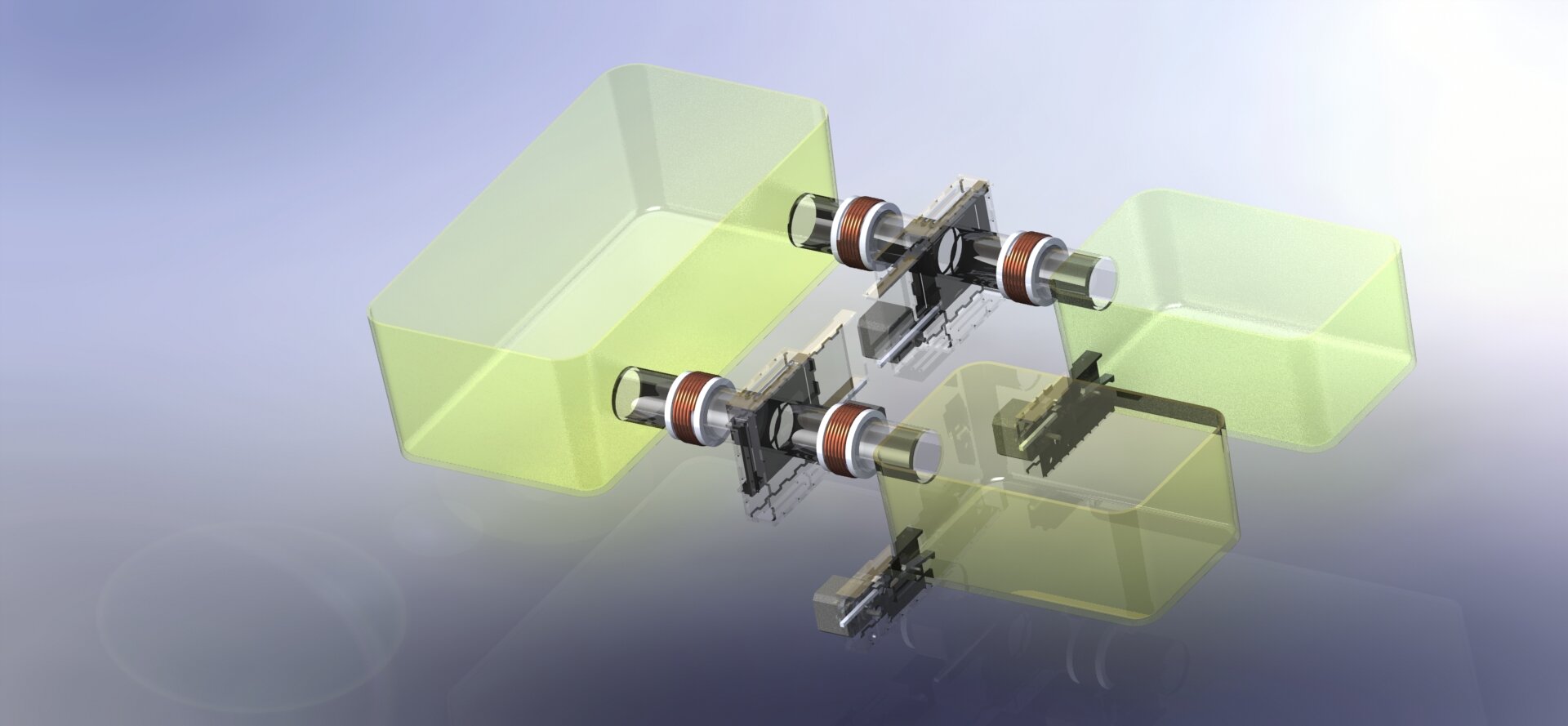The study of love and loss
The Donaldson Lab at the University of Colorado Boulder studies complex social relationships in monogamous mammals, or more specifically, prairie voles. Researching the making and breaking of monogamous pair bonds provides an opportunity to identify related neuroplasticity and how the loss of a loved one can affect biological circuits. This requires the design and development of behavioral apparatus in which social motivation can be autonomously quantified, improving the labor intensive and time consuming methods currently in use.
I had the opportunity to work closely with biologists and neuroscientists to design, construct, and iterate upon the systems shown below. This required a careful balance to satisfy the needs of the studies while keeping the animals unharmed. I also improved my design skills, implementing DFA and DFM strategies so future lab members can recreate the systems. Click on the images to learn more about the individual systems.
Magazine Training
These chambers are used to train animals to press levers. They are then rewarded with food or by being reunited with their partners. This is featured in the 9News clip above.
Components
Automated door
Food dispenser
Retractable levers
IR emitters and receivers
Electronic switches
Home Cage
These systems are used for performing long-term studies of partner pairs. Like with the training cages, the test animals press levers to reunite with their partners, but, unlike the training, these systems do not dispense food and are completely controlled autonomously.
Components
Automated doors
Retractable levers
RFID receivers
IR emitters/receivers
Final Design Coming Soon
Preference Chamber
This system is used to study preference among animals, in which three animals are placed in the chamber; the test animal, its partner, and an unfamiliar animal. Two of the levers in this system give the test animal access to its partner and the unfamiliar animal and the third lever dispenses food. To make this system autonomous and remove any need for handling the animals, both ends of the system are tilted up to slide the test subject back to the center prior to closing the doors.
Components
Automated doors
Retractable levers
IR emitters/receivers
Stepper motor and lead screw






